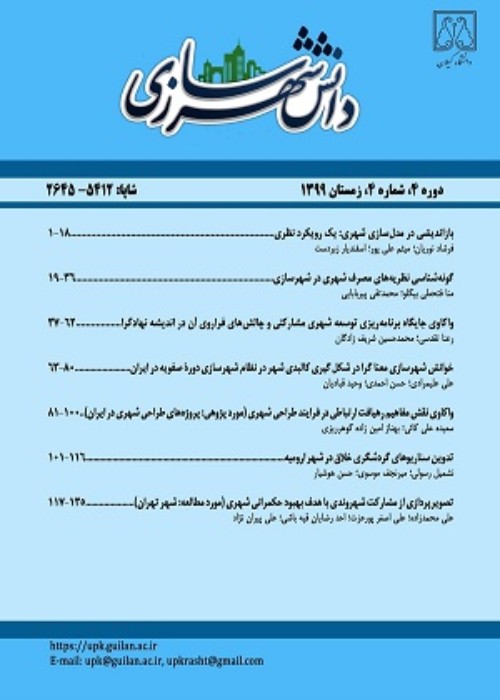Evaluation and Analysis of the Impact of the Constructed Contemporary Streets on the Structural-Spatial System of the Historical Fabric in the District 3 of Isfahan
In urban projects, having a wholistic approach seems essential. So, the scope of the project cannot be a reason to ignore its interaction with its adjacent area in the urban structure. In the urban development plans, ignoring the old structure of the city by imposing the new street network leads to the serious damages to the integrity of the urban fabric. In Isfahan and especially in its historical area, projects to revitalize the Atiq Square (Kohne - Imām Ali), the creation of axes of Bagh-e-Goldaste, Martyr Moghaddam and Nizam al-Molk as the contemporary projects have been the referents of such interventions which had a direct or indirect impact on this structure.
The present study was focused on the urban network and it tried to find out how the new development projects especially the ones related to the transportation networks, could affect the structural-spatial system of Isfahan historical districts.
In this applied research, data were collected by the library and survey methods and they have been analyzed through the use of the space syntax method. After analyzing the spatial structure of the historical districts of the city in the most important periods of the physical transformation including Seljuk, Safavid, Pahlavi and the contemporary eras, the effect of the structural revival of the square and the other projects have been studied with a focus on the land use and the transportation dimensions.
Result and
Findings showed that the cohesion of the spatial structure and organization of the city existed only during the Seljuk and Safavid periods. In Safavid era, the new structure has been formed with respect to the old fabric, but the new street network in Pahlavi era has neglected the existing context. This new development has isolated some parts of the urban fabric. Also, it has eliminated the spatial connection of the previous periods’ spatial elements by deteriorating the integrity of the urban fabric/space through the new network imposed on the existent urban form.
- حق عضویت دریافتی صرف حمایت از نشریات عضو و نگهداری، تکمیل و توسعه مگیران میشود.
- پرداخت حق اشتراک و دانلود مقالات اجازه بازنشر آن در سایر رسانههای چاپی و دیجیتال را به کاربر نمیدهد.



